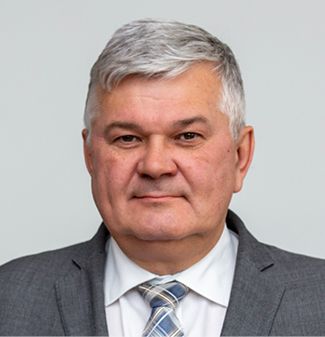
Today’s prevailing time scales


Vadim Nozdrin, Counsellor, ITU–R Study Group 7 — Science Services
While any event can be defined by three spatial coordinates and one time coordinate, time needs to be defined in a standard way and synchronized worldwide with extreme accuracy. A time scale is essentially an ordered, and correspondingly numbered, collection of points on a scale.
Today, four time scales are used to a greater or lesser degree:
- UT1 — Universal Time
- ET — Ephemeris Time
- TAI — International Atomic Time
- UTC — Coordinated Universal Time
Universal Time or UT1 is determined from observation of the Earth’s rotation.
It is proportional to the rotation angle of the Earth on its axis. The coefficient of proportionality is selected so that 24 hours in UT1 is close to the average duration of a day, and the phase is determined such that zero hours UT1 corresponds to mean midnight at the Meridian Line in Greenwich, UK.
A UT1 second is understood as a 1/86 400th part of the average solar day. Until 1960, this equalled one second in the international system of units (SI).
UT1, calculated and maintained by the International Earth Rotation and Reference Systems Service (IERS — formerly the International Earth Rotation Service), was the world’s generally accepted reference time scale until 1972.
Astronomers, however, have proven that a tropical year — understood as the interval between two consecutive passages of the sun through the vernal equinox — offers greater stability of time intervals than a day. In other words, time is maintained more accurately by using the Earth’s orbital movement around the sun than by using the Earth’s rotation.
Ephemeris Time or ET is determined using the value of the Sun’s mean longitude. It was set so that UT1 and ET approximately coincided in the year 1900.
A second of ET was determined as 1/ 31 556 925.9747th of the tropical year on 31 December 1899 (or at 12 hours ET on 0 January 1900 by BIPM’s technical definition). This was used as the SI unit for the second from 1960 to 1967.
International Atomic Time or TAI, unlike the previous two time scales, is based on a time interval determined by a physical phenomenon. The International Time Bureau (Bureau international de l’heure — BIH) coordinates this time standard through atomic clocks working in national laboratories worldwide.
The atomic second has been the SI unit of time since 1967. It is defined as the duration of 9 192 637 770 periods of radiation corresponding to the transition between two hyperfine levels of the basic structure of a caesium‑133 atom.
TAI was officially agreed to coincide with UT1 at a starting point on 1 January 1958. Since then, atomic time is determined by the Time Section of the International Bureau of Weights and Measures (Bureau international des poids et mesures — BIPM), which collects and processes the times kept by around 450 atomic clocks located in 85 countries.
Yet the idea soon arose to unify different time scales to increase accuracy. This led to the adoption of a new, coordinated global time standard starting in 1972.
Coordinated Universal Time or UTC is determined by the following system of equations:
UTC(t) – TAI(t) = n s
(where n is a whole number, currently n = 34 s)
| UTC(t) – UT1(t) < 0.9 s |
But the variations in the Earth’s rotation speed result in a divergence between UT1 and TAI. In such cases, the IERS may decide to regulate the second in relation to the predicted deviation between the time scales. Leap seconds are, accordingly, added — or potentially subtracted — at the end of a month.
Managing deviations
Although the UTC standard time scale is calculated and distributed by BIPM, users worldwide have access to local UTC values established through national laboratories (UTC(k)), of which there are some 85 worldwide, coordinated both with UTC and among themselves.
The local labs represented by UTC(k) provide the reference standard in their respective territories by means of various systems. These include broadcasting in SFTSS (standard frequency and time signal service) and SFTSSS (standard frequency and time signal-satellite service); via broadcasting satellites; via fixed, radionavigation and meteorological satellite services; and also on terrestrial networks over optical fibre or coaxial cable.
The International Telecommunication Union (ITU) plays a key role in the establishment and global distribution of standard-frequency and precise time signals. The ITU Radiocommunication Sector (ITU–R) recommends that all standard-frequency and time-signal emissions conform to UTC.
BIPM stipulates that the maximum deviation between UTC and UTC(k) must not exceed ±1 millisecond. For radiocommunication purposes, ITU–R recommends a narrower margin of ±100 nanoseconds.
This article first appeared in ITU News Magazine: The future of Coordinated Universal Time – part of a series of editions on topics to be discussed at the World Radiocommunication Conference (WRC-23), from 20 November to 15 December in Dubai, UAE.
Download your copy of the ITU News Magazine: The future of Coordinated Universal Time.
Header image credit: Adobe Stock
